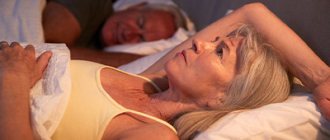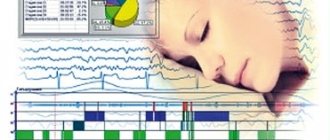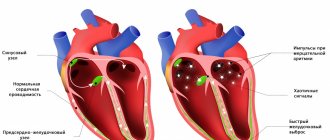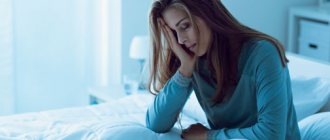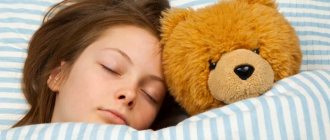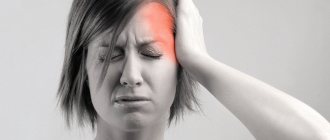The quality of your night's sleep determines the quality of your next day. It's no secret that insomnia and short sleep at night lead to weakness and a feeling of fatigue in the morning. If poor quality sleep happens regularly, it is fraught with negative consequences for the human body. Therefore, it is important to give up late-night gatherings at work or study, and give the body a full rest. If you can't sleep, breathing exercises for sleep will help.
Breathing exercises for sleep: what is it?
Breathing exercises before bed should be performed daily . Only under this condition will it be as effective as possible. But infrequent exercise is unlikely to bring tangible benefits.
Relaxing gymnastics were invented by American doctors. Their goal was to create a training method that would help fall asleep in just a couple of minutes.
Breathing exercises for sleep are based on the practice of ancient Indian yogis and are called “4-7-8” . These numbers mean how much time you need to spend on each stage of breathing. In other words, while performing the exercise, you need to inhale for 4 counts, hold your breath for 7 counts, and exhale deeply through your mouth for 8 counts. In this case, you need to take several such breaths. And preferably at least 10.
The advantage of such gymnastics is that it can be performed anywhere, at any time . Moreover, you don’t need any improvised means for this. Just lie down or sit down and start doing the exercises.
According to experts, to quickly fall asleep, you need to do gymnastics twice a day - in the morning and in the evening. Thanks to classes 2 times a day, you will notice positive changes after the first week of such practice.
Note that breathing exercises for sleep are aimed at creating inner peace, as well as complete relaxation of the soul and body.
Causes of poor sleep
The most common cause of insomnia or poor sleep is stress and anxiety. A person continues to scroll through the thoughts of the day in his head, and this makes it impossible to sleep.
The reason may be unsuitable sleeping conditions. A stuffy room or too low a temperature can disrupt sleep.
Perhaps the person has lost his rhythm - he sleeps during the day, so he can no longer sleep at night.
Health problems can cause sleep disturbances. If you have insomnia, be sure to visit a doctor.
ENT pathology also sometimes worsens the quality of sleep. Before starting drug therapy, you can try to discharge yourself with special exercises.
Rules for performing breathing exercises
The rules for performing breathing exercises are not limited to inhaling for 4 counts, holding your breath for 7 counts, and exhaling for 8 counts. It is very important to breathe slowly , since fast breathing no longer relaxes, but invigorates a person.
Note that when performing gymnastics, you should inhale through your nose and exhale exclusively through your mouth . Moreover, the exhalation must be “warm”. That is, when you exhale, you seem to warm the air in the room, while making a noisy sound “HA”.
In the first week of classes, it is enough to take only 2-3 breaths in the morning and 2-3 breaths in the evening. This is quite enough to get started. There is no need to do more in the first 2 days, since you may feel dizzy from an excess of oxygen.
Try to increase your oxygen load every day. Do one more repetition every day until you reach at least 50 reps . This will help you achieve a sleeping effect faster after the exercise.
You can do gymnastics in any body position . You can choose from: sitting, standing and even lying down. At the beginning, we recommend performing the exercise in a sitting position, leaning back in a chair. This way, you can breathe as deeply as possible, which is very good for complete relaxation.
Important point: Make sure that your stomach is fully protruded when you inhale, and pulled in as much as possible when you exhale. This breathing style trains the diaphragm, the muscle that separates the chest and abdominal cavity.
It is worth emphasizing that breathing exercises for sleep are carried out slowly, and all exercises and movements are performed slowly. According to the creators of this complex, unhurried execution makes each breath as effective as possible for quickly falling asleep.
If you have trouble sleeping
If you have trouble sleeping, know that you are not alone! According to the American Sleep Association, insomnia is a very common complaint these days. Thus, about 30% of American adults have short-term sleep disturbances, and more than 10% experience chronic problems falling asleep or constant daytime sleepiness.
In our fast-paced and fast-paced world, with a busy pace of life, when days are filled with household chores, endless work, financial difficulties, parental impotence and other emotionally draining situations, it can be difficult to relax, calm down and fall asleep.
Many of us in such a situation grab pills, but few people know that insomnia can be overcome not only with the help of sedatives and sleeping pills, but also with breathing exercises.
Facial gymnastics for women and men with insomnia
To fall asleep, facial gymnastics for women and men is often used, which can quickly put you to sleep. The essence of this exercise is to relax the facial muscles, the tension of which can cause insomnia. Typically used for relaxation:
- Temple massage . To perform this exercise, you need to place two fingers on your temples and move them clockwise, pressing slightly on the skin. The duration of this exercise is at least 1 minute;
- Eyelid massage . To perform it, you should make circular movements, as if circling your eyes with the fingers of both hands. The eyes, of course, should be closed. Do 7-10 such movements;
- Forehead massage . To do this, place the fingertips of both hands on the middle of your forehead. And then massage it with rubbing movements, moving the fingers of your left hand from the center of the forehead to the left temple, and the fingers of your right hand to the right. To relax, it is enough to spend 1-2 minutes on the exercise.
Additional tips for improving sleep quality
To restore normal sleep and speed up the process of falling asleep, it is necessary to create optimal conditions in the bedroom.
- Free the room from unnecessary things and get rid of allergens - flowers, carpets.
- Properly arrange your sleeping place by choosing a moderately elastic mattress and several pillows - under your head, neck, back, knees.
- Drink a cup of tea or a glass of milk with honey at night.
- Eliminate indoor lighting sources and draw curtains.
- Ensure silence in the room - turn off the TV, computer.
In combination with breathing exercises, these activities will help ensure a strong and healthy rest with pleasant dreams.
Relaxing gymnastics for insomnia
Breathing exercises for sleep are effective on their own. However, its combination with relaxing gymnastics for insomnia makes breathing practices even more useful.
To perform the first exercise, you should take a lying position . Then, leaning on only one hand, turn your body on its side, while holding your hand above you. You should hold in this position for at least 30 seconds . After this, changing your supporting hand, take the opposite body position and stand there for at least 30 seconds. That is, the same amount of time as with support on the first hand. Note that this exercise is designed for more or less trained people. Therefore, include it in your training program at your discretion.
The second relaxation exercise, like the first, is static . Therefore, it is performed in a stationary position. To perform it, lie on your stomach, lift your leg up and hold it for 1 minute. Repeat the exercise in the same way with the other leg.
Both of these exercises will relax all the muscles in your body and allow you to fall asleep quickly.
Symptoms of poor sleep habits and hygiene
The quality of a night's rest can be impaired by poor bedroom conditions and too little or too much sleep. Let us list the most common signs of violation of rest routine and hygiene.
Sometimes, to normalize your sleep, it’s enough just to change the pillow and carefully monitor the level of humidity and temperature in the bedroom
- Headache.
Often bothers those who sleep in a stuffy room with low humidity. The pillow is also important: if the head is thrown back during rest, this impairs blood circulation in the vessels of the neck, prevents the flow of blood to the brain and leads to oxygen starvation. And hypoxia is a prerequisite for the occurrence of migraines. - Sweating.
This problem, as a rule, can be solved by using a moderately warm blanket, ventilation, and monitoring the level of humidity. - Allergy.
Common allergens are house dust, laundry detergent, lint in pillows, and animal hair (including wool blankets). Night allergies manifest themselves as a dry, non-productive cough, difficulty breathing, sneezing, lacrimation, and rhinitis. - Night cough.
If the air is too dry, the mucous membrane of the respiratory tract does not have time to restore the protective film of moisture. This leads to irritation and causes a defensive reaction - coughing. Low temperature and dusty air lead to a similar problem. - Edema.
The cause of this trouble is excess or lack of sleep. With “lack of sleep” the changes are insignificant and are explained by mild metabolic disorders. When “oversleeping,” a person is in a horizontal position for a long time, which negatively affects blood circulation, causing stagnation of blood and the release of its liquid part into the tissue. The use of high pillows also affects the development of edema.
Symptoms of insomnia (insomnia)
Decreased quality of night rest and constant lack of sleep causes deterioration in physical and mental health. In a state of stress, the body produces anxiety hormones that speed up the heart, which, as in the case of apnea syndrome, often leads to hypertension
.
The inability to fall asleep at night keeps a person tense, which also leads to problems of a physiological and psychological nature.
Excitation of the autonomic nervous system leads to increased blood pressure and rapid heart rate. The patient is in a lying position and practically does not move, but his body experiences stress, as during physical exercise, which provokes sweating
.
And even if you manage to fall asleep, a person still wakes up several times a night due to minor extraneous sounds or disturbing dreams. After each awakening, you have to make an effort again to fall asleep. Therefore, insomnia is often accompanied by complaints of:
- light sleep;
- nightmares.
With a reduction in the quantity and deterioration in the quality of rest, sleep does not provide the necessary feeling of vigor and freshness. As a result, the patient experiences:
- difficulty waking up;
- fatigue and weakness;
- headache;
- irritability;
- daytime sleepiness.
How to relax before bed correctly
Edmund Jacobson once spoke about how to relax properly before going to bed . This American doctor in the mid-20th century developed a special relaxation technique aimed at reducing muscle tension.
Neuromuscular relaxation according to Jacobson involves alternately tensing the muscles of the whole body. As a rule, you should tense your muscles starting with your legs. That is, first the calf muscles, then the thigh muscles, then the buttocks, then the abs, etc., etc. Also, as an option, you can try to start with the muscles of the neck or arms, and finish with the muscles of the legs.
Each muscle must be tensed for 10 seconds, then relaxed for the same 10 seconds. Next, tense other muscles in sequence. For example, if you started with your legs, then tense your abdominal muscles, chest, shoulders, etc.
The effect of Jacobson's relaxation will be noticeable after 2-3 weeks of daily exercise . Doing exercises before bed every day will significantly improve your sleep and make it easier to fall asleep.
1. What is “sleep apnea syndrome”?
2. What causes sleep apnea to occur?
3. What explains the appearance of daytime sleepiness in obstructive sleep apnea syndrome?
4. What should not be done if you snore or stop breathing during sleep?
5. Why, even when the manifestations of sleep apnea syndrome are obvious, do doctors not always diagnose this disease?
6. Is there a connection between sleep apnea and cardiovascular disease?
7. Is there a need to go to the hospital for diagnosis and treatment?
8. Is it worth waking up a person if you witness respiratory arrest during sleep?
9. Why consult a doctor, carry out diagnostics and select treatment, if you can immediately buy a CPAP machine and use it?
10. Is there a connection between snoring and stopping breathing?
11. Is it possible to use CPAP machines to treat snoring in the absence of respiratory arrest?
12. Can we count on the success of surgical intervention on the soft palate for obstructive sleep apnea syndrome?
13. How long does it take to feel the effect of using a CPAP device for sleep apnea syndrome?
14. What is recorded during cardiorespiratory monitoring and polysomnography?
What is “sleep apnea syndrome”?
This is a disease, the main manifestation of which is periodic pauses in breathing during sleep. In approximately 9 out of 10 cases, we are talking about obstructive apnea, that is, breathing stops associated with impaired air movement through the upper respiratory tract (obstruction). Such people usually also snore in their sleep. Much less common is central sleep apnea syndrome, in which the regulation of the respiratory muscles is disrupted. Breathing disorders at night can also be a manifestation of bronchial asthma, heart failure, epilepsy, panic attacks (“vegetative crises”) and a number of other problems. That is why a doctor dealing with this range of medical problems must be trained primarily in the field of cardiology and pulmonology, and diagnosis and treatment are most complete only on the basis of a large multidisciplinary clinic, where, if necessary, it is possible to carry out those diagnostic studies that are necessary to exclude (or vice versa , for diagnosis) of a number of similar diseases.
Obstructive sleep apnea syndrome was first described about fifty years ago, and in 1981 special devices appeared for the treatment of severe and moderate forms. There are other ways to treat this disease, and the decision on the optimal treatment option is made by the doctor during a discussion of this issue with the patient based on data obtained from a conversation, examination and special instrumental diagnostic methods.
What causes sleep apnea to occur?
A certain category of people have anatomical prerequisites for the occurrence of snoring and respiratory arrest of an obstructive nature (obstructive - that is, associated with the presence of an obstacle to the passage of air flow, obstruction). Such anatomical features of the structure of the upper respiratory tract can be, for example, an increase in the size of the uvula, a low-lying soft palate, enlarged tonsils, etc.
Different people have different structural features of the soft tissues of the pharynx, which determine its lumen. The structure of the face - mainly the lower jaw - can also determine the size of the lumen of the pharynx. The narrower the lumen of the pharynx, the more likely the occurrence of snoring and breathing pauses during sleep of an obstructive nature.
Take a close look at the photos of the faces of these two men. Can you guess which of them is predisposed to snoring and stopping breathing?
Correct answer: the man in the left photo, who has a small chin that goes into his neck without a clear boundary. This suggests that the lumen of his pharynx is narrower. Often such people snore and have intermittent breathing during sleep. What is the sound of snoring? This is the sound of vibration of the soft tissues of the pharynx, which create increased resistance to the air stream. The soft palate and uvula vibrate most often. If at some point in time the walls of the pharynx completely collapse, the sleeping person will stop breathing.
When a person gains weight, adipose tissue increases in volume not only on the stomach or thighs. If your neck circumference has increased (this can be judged, for example, by a shirt collar that has become tight), this means that the volume of adipose tissue has increased under the mucous membrane of the pharynx, and the space between its walls has decreased.
Look at the photo of the throats of two people, one of whom is obese. Can you feel the difference? Indeed, obesity is perhaps the most common prerequisite for the development of snoring and sleep apnea.
.
You may naturally have a question: why does an obstacle to the movement of air through the pharynx occur only during sleep, while during wakefulness there are no problems with the movement of the air stream? During wakefulness, the nervous system maintains all striated muscles in a state of tone. However, when we fall asleep, the muscles relax. Not only the muscles of the limbs, face, and back relax during sleep, but also the muscles of the pharynx. Since the pharynx does not have any rigid frame and its walls are formed by muscles and other soft tissues, there is some “sagging” of the soft palate, retraction of the root of the tongue - and now it is not so easy for air to overcome all these obstacles. Alcohol and most sleeping pills increase the decrease in muscle tone during sleep. As a result, conditions are created for the occurrence of respiratory arrests - apnea. Examine carefully in front of a mirror in good lighting your pharynx, soft palate, uvula and tonsils. If the space limited above by the soft palate and uvula, on the side by the palatine arches and tonsils, and below by the root of the tongue is too narrow, here is the answer to why you snore and stop breathing during sleep. Perhaps there are other reasons... To establish these reasons and assess their contribution to the development of the symptoms that bother you is the task of a specialist.
What explains the appearance of daytime sleepiness in obstructive sleep apnea syndrome?
If, in addition to snoring, you begin to feel sleepy during the day, and this despite a sufficient duration of sleep at night, it is very likely that in addition to snoring, you also have pauses in breathing during sleep, and quite a lot - about a hundred per night or even more. In severe cases, the number of breathing stops during a night's sleep can reach three or even six hundred. Each cessation of breathing interrupts the normal course of sleep, and this does not mean that every time the person wakes up. Interruption of sleep in this case means that sleep will become more superficial for some time. What happens? When sleep moves into superficial sleep, the brain sends a signal to the muscles of the pharynx to increase tone, and the gap between the walls of the pharynx increases. Air begins to enter the respiratory tract again, although at the cost of decreasing the depth of sleep. It turns out that interrupting sleep during each stop of breathing protects the body from too long apneas, which could lead to the most dire consequences if they lasted at least a few minutes. The brain thus protects the person, fulfilling the same role as a caring wife who pushes her husband, suffocating in his sleep, so that he wakes up. However, such intermittent sleep does not bring rest. Even after eight or ten hours of such sleep, you can wake up lethargic and broken, because as soon as the sleep deepens, breathing immediately stops, and then the interruption of sleep and its transition to the superficial stages. This process can be repeated many times overnight.
What should not be done about snoring and sleep apnea?
Many have witnessed the phenomenon that after drinking alcohol in the evening, snoring increases significantly. And for those who have already had pauses in breathing during sleep, their number and duration increase sharply. Similar phenomena occur if you take sleeping pills. Benzodiazepine sleeping pills and the most famous of them, phenazepam, are especially dangerous. Both alcohol and sleeping pills reduce the tone of the muscles of the pharynx, thereby contributing to the “sagging” of its walls. If you have untreated obstructive sleep apnea, taking most sleeping pills or drinking alcohol can be dangerous. High pillows bend the cervical spine, the chin moves closer to the chest, and the lumen of the pharynx, constricting, becomes very narrow. As a result, conditions are created for worsening snoring and sleep apnea.
Why, even when the manifestations of sleep apnea syndrome are obvious, do doctors not always diagnose this disease?
In the early 2000s, when I first started working on this problem, the vast majority of doctors knew nothing about sleep apnea. Over the past years, the awareness of doctors of various fields in this regard has increased significantly, but even now not all doctors know about the existence of this disease. Can a doctor diagnose or even suspect a disease that he does not know about? That’s why we regularly have to deal with situations where, even with typical manifestations of sleep apnea syndrome, a patient is subjected to numerous unnecessary diagnostic tests that do not clarify the situation at all. Sometimes a patient comes in with a stack of test results and tests done in an attempt to get an explanation for their troubling symptoms. What's not there! Magnetic resonance imaging of the brain, electroencephalography, rheoencephalography, echoencephaloscopy, ECG, ultrasound of all organs, various laboratory tests, etc. But there is still no diagnosis, and the painful symptoms do not go away... Dry mouth that occurs at night is beginning to be attributed to diabetes mellitus, frequent urination at night is attributed to prostate adenoma or urinary tract infection, daytime sleepiness is being tried to be explained by dyscirculatory encephalopathy due to arterial hypertension, diabetes, age... More and more new medications are prescribed, which for some reason do not help.
One thing is certain: every problem requires knowledge, experience, and qualifications to be successfully solved. Diagnosis and treatment of breathing disorders during sleep also requires special training from the doctor, knowledge in cardiology, pulmonology, and functional diagnostics. Our clinic and I personally have the most experience in the Krasnodar region in the diagnosis and treatment of sleep-disordered breathing (more than 12 years). In the conditions of a large state multidisciplinary clinic, which is the regional hospital No. 2, there are all the conditions for solving those associated health problems that usually accompany sleep apnea syndrome - arterial hypertension, heart rhythm disturbances, heart failure, obesity and many others. A competent specialist usually has the shortest possible path to a correct diagnosis.
Is there a connection between sleep apnea and cardiovascular disease?
It has long been discovered that sleep-disordered breathing is associated with an increased risk of developing cardiovascular disease. This risk is higher the more severe the breathing disorder during sleep. In other words, the more breathing stops during an hour of sleep, the worse the prognosis. It was surprising that obstructive sleep apnea syndrome is the most common cause of secondary arterial hypertension (secondary hypertension, unlike hypertension, is a consequence of some other disease - kidneys, endocrine glands, aorta, etc.). Another nuisance that comes with frequent sleep apnea is the increased risk of myocardial infarction and stroke, as well as serious cardiac arrhythmias. On the contrary, it often happens that with successful treatment of nocturnal breathing disorders, it is possible to cope with poorly controlled arterial hypertension, prevent severe cardiovascular complications, and restore performance.
Pay attention to a fragment of cardiorespiratory monitoring of a patient with severe sleep apnea syndrome. Respiratory arrest is manifested on the upper curve by the absence of air flow. The chest and abdomen (the second and third curves from the top) continue to move in an attempt to inhale. The heart rhythm at this moment slows down significantly, and this is clearly visible on the electrocardiogram (second curve from the bottom). At the end of respiratory arrest, two rather long pauses in the work of the heart occur. As soon as breathing is restored, there is a clear increase in heart rate. There can be several hundred such pauses in the work of the heart per night, and their duration can sometimes even reach ten seconds or more (!).
Example. The patient, a 55-year-old man, who came to our clinic suffered from severe obstructive sleep apnea syndrome. He was bothered by severe daytime sleepiness, and involuntary falls asleep occurred. Short-term falls asleep sometimes even occurred while driving a car - during the short time for which he stopped at a red traffic light. The employer even raised the issue of dismissal. Moreover, despite taking three (!) medications to treat arterial hypertension, blood pressure practically did not drop below 160/100 mmHg. Art. After starting treatment for sleep apnea syndrome, the patient's drowsiness disappeared completely within a few days, and he returned to work. As a result of successful treatment of sleep-disordered breathing, the patient was able to maintain normal blood pressure by taking only one drug (instead of three). Without any additional dietary measures, the patient's weight decreased from 150 to 120 kg, and this happened only due to the normalization of breathing during sleep, since no further therapeutic measures were taken in this regard. The fact is that with this disease, endocrine disorders develop, which prevent weight loss, despite sometimes heroic efforts.
Is there a need to go to the hospital for diagnosis and treatment?
Answer: no. In the last decade, devices for diagnosing sleep-disordered breathing have become so compact that they can be used in outpatient settings. What does it look like? The doctor or nurse installs the sensors in the clinic, and the patient can sleep at home with a small recording device. Those parameters that are necessary for diagnostics will be recorded during night sleep in the device’s memory.
The doctor then reviews this nightly recording and evaluates the number of breathing stops, their duration, dependence on body position, effect on heart function and blood oxygen saturation. This information is absolutely necessary to make a meaningful and informed decision about which treatment will be most effective in your case. Sometimes it turns out that the patient does not have any significant breathing disorders during sleep, but has other problems, and they are treated differently. To select treatment for sleep apnea syndrome, there is also no need to be hospitalized in a hospital. If there is a need to use special breathing apparatus, such a device is adjusted during two to three hours of sleep in the day hospital of the clinic, in a single ward, and to evaluate the effectiveness of treatment, such a device is given to the patient for several days at home.
Is it worth waking up a person if you witness respiratory arrest during sleep?
It is difficult to remain indifferent when a person is suffocating in his sleep before your eyes... Fearing that he will die, loved ones often begin to wake him up during the next stop breathing. Is it worth doing this? It is usually impossible to prevent the onset of death in this disease by simply waking up a person - simply because death, if it occurs, is usually associated not with cessation of breathing, but with an increased risk of developing myocardial infarction and stroke. But you can’t prevent them this way. Several pauses in breathing during the night will not affect the fate of the patient in any way, and if their number reaches hundreds, then it is useless to wake up: as soon as you fall asleep, pauses in breathing appear again. What then, not sleep at all? Such attempts to wake up are perhaps justified only when this is followed by turning over from back to side: on the side, both snoring and pauses in breathing are usually less pronounced. It is better to quickly organize a consultation with a specialist - he will understand the problem, establish a diagnosis and select a treatment
Why consult a doctor, carry out diagnostics and select treatment, if you can immediately buy a CPAP machine and use it?
Why consult a doctor, carry out diagnostics and select treatment, if you can immediately buy a CPAP device and use it? In typical cases, diagnosing obstructive sleep apnea syndrome is not difficult with a characteristic combination of daytime sleepiness, snoring and sleep apnea in the presence of excess weight. Why not, in this case, after reading a description of the symptoms on the Internet and finding them in yourself, order a device and start treatment? But a whole series of questions immediately arises: is this really obstructive sleep apnea syndrome? Or maybe alveolar hypoventilation? Or central apnea? Or sleep panic attacks? What is the probability of successful use of a CPAP device in your case? Which mask will be optimal and most comfortable for you? Or would it be better to use nasal cannulas? And most importantly: what device settings will you sleep with? After all, this is what determines the result and comfort of treatment. And one more thing: approximately 10% of patients with sleep apnea, having tried this method of treatment, refuse it, without feeling significant benefits from the treatment. Maybe you belong to this 10%? The doctor is called upon to answer all these questions, conduct a diagnostic study and select a mode of operation of the device that will ensure the restoration of breathing during sleep. The doctor will also select the most suitable device model and mask for you: its size, shape and version (oronasal, nasal, cannula). You can, of course, try to do all this yourself by trial and error... But won’t this ultimately cost more in both time and money - despite all the possible modesty of the results achieved?
Is there a connection between snoring and stopping breathing?
Snoring and sleep apnea are two stages of the same process. When a person snores, air overcomes increased resistance in the airways, causing the soft tissues of the throat to vibrate. When breathing stops (apnea), the flow of air into the airways for some time - up to one or two minutes - stops completely, since an obstacle (obstruction) occurs at the level of the pharynx.
During this time, the chest and abdomen move as if trying to breathe, and the complexion may take on a bluish-purple tint if the apnea persists. Eventually, air rushes into the airways with a loud “snorting”, followed by several noisy inhalations and exhalations, and breathing may stop again. In severe forms of sleep apnea syndrome, the number of breathing stops per night can reach several hundred (!). Of course, in such cases there can be no question of any full-fledged sleep, so in the morning such a person may feel lethargic and weak, and during the day he may uncontrollably fall asleep. The most severe of our patients used to fall asleep while driving a car. Properly selected treatment allowed them to regain functionality and good health.
Look at this picture - a fragment of a recording of the breathing of a patient with severe sleep apnea syndrome. The top curve reflects the air flow near the nose and mouth, the middle curve shows the breathing movements of the chest, and the bottom curve shows the movements of the abdomen. No special education is required to understand exactly where breathing stops and where breathing is restored. When breathing stops, a straight line is recorded on the upper curve. At the same time, the chest and abdomen move in an attempt to inhale, but to no avail. Stopping breathing can occur in rows, as in this figure. And with severe breathing disorders during sleep, it may turn out that during sleep a person does not breathe more than half of the time. What could this mean? It is not difficult to guess that at the moment breathing stops, the oxygen concentration in the blood begins to fall, and in severe cases reaches very low values. At the same time, the functioning of the brain and other organs is disrupted. This can be especially dangerous if you have existing diseases of the cardiovascular system.
Is it possible to use CPAP machines to treat snoring without stopping breathing?
Answer: no. The use of such devices for the treatment of snoring is inappropriate if there is no obstructive sleep apnea syndrome. At the same time, these devices effectively eliminate snoring in patients with sleep apnea. But in this case, CPAP therapy is used not so much to eliminate snoring, but to treat much more serious and unpleasant symptoms: sleep apnea, daytime sleepiness, fatigue, high blood pressure, frequent night urination, etc. To figure out whether the patient really has only snoring, or the process has gone further and the patient has a significant number of apnea episodes during sleep - this is the task of special diagnostic methods: cardiorespiratory monitoring or polysomnography. In any case, the doctor searches for factors predisposing to snoring and nighttime respiratory arrests: structural features of the pharynx, nasal cavity, obesity, dysfunction of the thyroid gland, etc. Only by assessing the contribution of each of these factors can the likelihood of success of intervention on the soft tissues of the pharynx be predicted , which is the most common treatment for snoring and is performed by specially trained ENT surgeons.
Is it possible to count on the success of surgical intervention on the soft palate for obstructive sleep apnea syndrome?
In most cases the answer is: NO. If we talk about moderate to severe obstructive sleep apnea syndrome, then the answer is almost unequivocal: NO. These surgeries may be helpful for snoring and mild sleep apnea. But only with careful selection of candidates for such intervention. The physician must evaluate the factors that create the preconditions for the development of snoring and respiratory arrest in each patient and determine which of them can be influenced by surgical intervention. Only this approach can be the basis for making a meaningful and responsible decision to perform surgery on the soft palate. If, for example, the development of snoring is based on structural features of the lower jaw or obesity, the operation is unlikely to benefit anyone other than a commercial clinic. The same can be said if snoring develops as a result of dysfunction of the thyroid gland. There are a number of other reasons that surgery on the soft palate cannot affect. As in many other matters, here you should rely on the opinion of the specialist you trust. If you have reason to suspect that the problem is not limited to snoring alone, consult a specialist in sleep breathing disorders and undergo a diagnostic test at the SKAL clinic of the regional hospital No. 2. It is worth suspecting that, in addition to snoring, you also have sleep apnea, if your blood pressure is high, there is fatigue and drowsiness during the day, if you have experienced awakenings from a feeling of lack of air, if you have experienced night urination that was previously unusual for you... Sleep apnea syndrome in its manifestations can be quite varied and confuse an untrained doctor... That is why it is better to consult a specialist and, if necessary, conduct a diagnostic study that will resolve almost all issues in this area.
How long does it take to feel the effects of using a CPAP device for sleep apnea?
The effect of using CPAP machines comes surprisingly quickly, and you can verify this yourself after the doctor selects its settings. Many patients note changes for the better after the first night, when for the first time in many years they are able to sleep well and feel much more energetic during the day.
Within two or three nights, daytime sleepiness disappears, performance is restored, and the mouth does not dry out at night, since the person now breathes through the nose. Interestingly, in the process of longer-term treatment of severe forms of this disease (sleep apnea syndrome), weight decreases without any additional effort - after all, frequent breathing stops during sleep also cause endocrine disorders that contribute to weight gain. The sleep itself becomes much more peaceful and deep. It is very important that the risk of such serious cardiovascular complications as myocardial infarction and stroke decreases and becomes the same as in people who do not have sleep apnea.
What is recorded during cardiorespiratory monitoring and polysomnography?
To diagnose breathing disorders during sleep and identify their nature, cardiorespiratory monitoring is most often used. Polysomnography, in addition to those parameters that are recorded during cardiorespiratory monitoring, also allows one to assess the stages and phases of sleep, but this does not always add anything valuable to the diagnosis of sleep apnea syndrome.
The value of these studies in diagnosing sleep breathing disorders can best be understood by seeing the recordings themselves.
Fragment of recording of cardiorespiratory monitoring. Recorded parameters, from top to bottom: ECG, snoring, air flow, chest movements, abdominal movements, blood oxygen saturation, pulse rate, body position.
Frequently repeated long-term episodes of obstructive apnea: the patient does not breathe most of the time
Frequently recurring episodes of obstructive apnea (movements of the chest and abdomen persist in the absence of air flow. Blood oxygen saturation curve - fifth from the top - after each stop of breathing, it clearly goes down - highlighted in color)
Two episodes of central apnea - not only is there no air flow, but there is also no movement of the chest and abdomen (second, third and fourth curves from above)
A fragment of a polysomnographic recording with an episode of obstructive apnea (there is no air flow, then breathing is restored, this is accompanied by awakening). Recorded parameters, from top to bottom: oculogram, muscle tone, EEG, ECG, air flow, chest movements, abdominal movements, blood oxygen saturation.
Exercise for insomnia
Breathing exercises for sleep go well with physical exercises for insomnia. Moderate exercise will relax the muscles of your body, and proper abdominal breathing will help calm your thoughts and set you up for sleep.
Among the exercises that are useful to perform before going to bed are the following:
- Exercise while sitting . Sit on the floor or sofa. Place your feet with your feet facing each other. Cross your arms in front of you. For complete immersion, close your eyes. Stay in this position for 2-3 minutes. At the same time, breathe correctly, “inflating” your stomach to the maximum as you inhale and drawing it in as you exhale;
- Lying exercise . Lie down on a hard surface and raise your legs a few centimeters up. Hold in this position for 10-20 seconds. Then lower your legs and rest. Repeat leg lifts a couple of times;
- Lying exercise No. 2 . While on the floor, do a reverse boat. To do this, you need to lean on the floor only with your shoulders and heels. Stay in this position for 15-20 seconds, then rest. Do 3-4 such approaches;
- Half-lifts of the body . From a lying position, you need to rise a little, as if bending the body on the abdominal muscles. Stay in this pose for 10-15 seconds. Return to the starting position. Then relax and repeat the exercise 2-3 times.
Contraindications
Persons with infectious diseases or any pathologies of the respiratory system will have to refuse to perform breathing exercises. Such actions should be carried out with caution in old age. If a patient over 60 years of age has not previously practiced such gymnastics, it is no longer recommended to start it. Do not strain the body at elevated body temperature, weakness, or general malaise. If you really want to sleep after going to bed, you can also refrain from the session so as not to disturb your sleep.
Breathing exercises for insomnia are safe and effective. They are available, do not require special knowledge, and rarely cause discomfort. At the same time, you need to understand that it will not be possible to get rid of sleep disorders only with their help; the approach must be comprehensive.
The connection between sleep and breathing
At first glance, it may seem that breathing and healthy sleep have nothing to do with each other. But if you try to fall asleep in a stuffy and hot room, being in an irritated state or worrying about important things planned for tomorrow, it becomes clear that without physical relaxation and mental balance, you can forget about a full night’s rest. Busy with restless thoughts and starved of oxygen, the brain is not able to completely switch off, preventing a person from falling asleep quickly. And correctly selected breathing exercises in this case help to reduce discomfort to a minimum, allowing the body to relax and tune in to rest.
These exercises will also help strengthen your immune system.
By regularly performing exercises of this kind, you can:
- cleanse the airways, getting rid of chronic respiratory diseases;
- improve blood circulation, providing brain cells with additional oxygen flow;
- relieve muscle spasms and get rid of pain;
- normalize the functioning of the nervous system, reduce emotional stress and mental fatigue;
- strengthen the immune system and reduce the risk of developing many diseases of the endocrine, cardiovascular and gastrointestinal systems.
In addition, breathing exercises help the brain to distract itself from restless thoughts that prevent you from falling asleep quickly: performing such exercises requires full concentration on the alternation of inhalations and exhalations, leaving no time for the fears and anxieties accumulated during the day.
Warm-up
Exercises are performed for 30 seconds.
Tilts and turns of the head
Perform simple head tilts to the sides for 30 seconds, without raising your shoulders. Gently stretch the sides of your neck muscles. Then turn your head slowly to the sides, do not make sudden movements. Do not twist your neck too much, feel the stretching of the muscles.
Circular movements with hands
Standing straight, perform circular movements with your arms in one direction, then in the opposite direction. Do not swing when moving your arms. Do not round your back and do not help with your spine and shoulder blades. Movement occurs only in the shoulder joints.
Knee lift or running in place
For beginners , you can perform a simple version by raising your knees up one at a time, your hips should reach a horizontal position. More advanced ones can perform quick climbs, simulating running in place.
Tips for use
The device should be used for the treatment of apnea only as prescribed by a doctor. It will help normalize sleep and improve well-being. But to make using the device comfortable and effective, you need to consider a few tips:
- to avoid dryness and itching, it is better to use devices with a humidifier and heating;
- undergo regular examinations with a doctor to adjust therapy;
- before each switching on, you need to check the comfort and humidifier settings;
- a special CPAP pillow will help prevent the mask from falling off;
- The mask must be washed after each therapy session.
What is CPAP therapy
CPAP therapy appeared in the 80s of the 20th century. This is a form of mechanical ventilation in which air is delivered under slight positive pressure. This method is used to treat obstructive sleep apnea. By supplying air to the patient's airways, the device prevents them from closing, ensuring normal breathing.
Apnea is short-term cessation of breathing during sleep due to obstruction of the airways. This happens when the root of the tongue is retracted or obesity. If there are more than 20 pauses in breathing per hour and they last longer than 10 seconds, this condition can pose a health hazard. The patient does not get enough sleep, headaches appear in the morning, and fatigue. Complications of apnea can include increased blood pressure and heart failure.
Sleep apnea machines prevent the airways from closing. They supply air under low pressure, ensuring proper inhalation, and carry out normal ventilation of the lungs.
The result of using CPAP therapy is as follows:
- sleep becomes restful;
- apnea disappears and breathing returns to normal;
- blood pressure returns to normal;
- heart rate normalizes;
- the general condition of the patient improves;
- sugar levels decrease.
